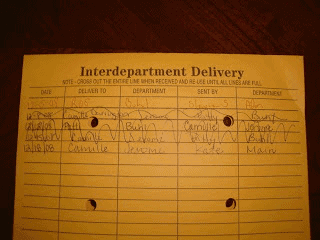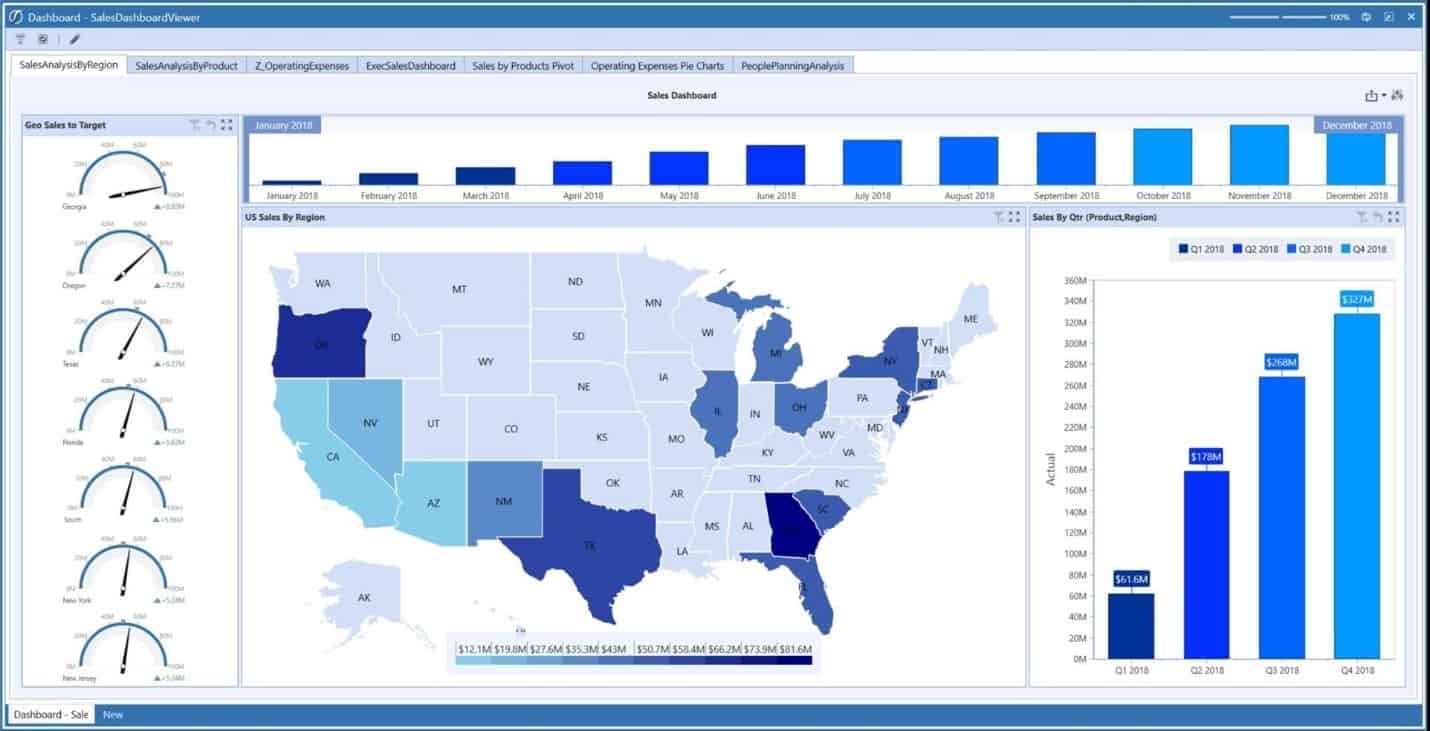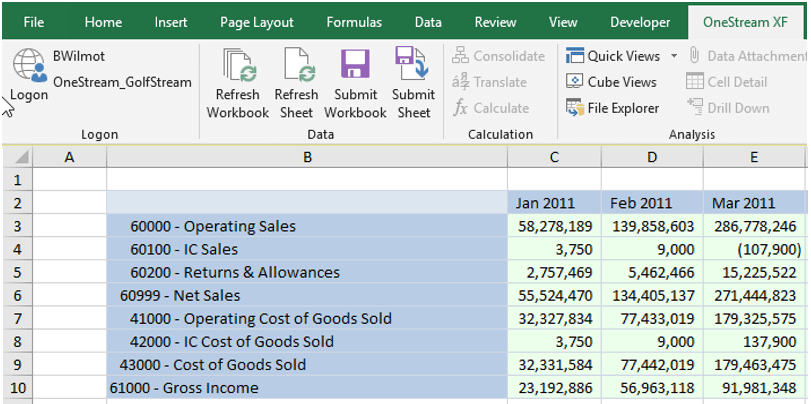Unleashing the true value of the finance team across the organization is a challenging task. Why? Because it requires CFOs and finance executives to examine and re-tool their people, their processes and systems. And the examination of finance processes and systems should span everything. From operational systems such as ERP, HCM, CRM and Supply Chain – to corporate performance management (CPM) systems and processes such as financial close and consolidation, reporting, planning, forecasting and analysis.
But when it comes to CPM processes, many organizations are held back from transformation due to reliance on spreadsheets and manual processes, or multiple legacy CPM products that are difficult to manage and don’t easily work together.
Ground Zero – Upgrade to a CPM 2.0 Platform
In our recent blog series focused on the “5 Steps to Unleashing Finance”, we’ve highlighted the need for a modern, CPM 2.0 platform as a prerequisite to unleashing the value of finance. This means having a platform that unifies key finance processes and provides purpose-built functionality for financial consolidation, reporting, planning, forecasting and analysis. A CPM 2.0 platform integrates financial and operational data from multiple sources and provides a single version of the truth for actuals, budgets, plans, forecasts and analytical data.
With a modern CPM 2.0 platform in place, finance will have a better chance of success with “The 5 Steps to Unleashing the True Value of Finance”, which are highlighted below:
- Know the business – Gather feedback from business partners and understand their key success metrics and KPIs.
- Drive agility in planning & forecasting – Adopt dynamic forecasting processes that are less focused on a 1X event, such as the annual budget.
- Streamline the financial close – Simplify tasks with automation; eliminate manual data movement, errors and risk, provide complete audit trails and visibility.
- Automate reporting – Create self-service reporting for business partners, drive standardization and reduce risk.
- Leverage advanced analytics – Consider predictive analytics or scenario analysis to enhance the dialogue with business partners.
Today’s blog post focuses on Step 4 – Automate Reporting. Read on to learn some of the key techniques you can leverage to accelerate the delivery of financial, management and statutory reporting and free up even more finance time and resources for value-added activities.
Different Strokes for Different Folks
In addition to streamlining the financial close process, it’s also important create efficiency in corporate reporting. But for many, this too is a challenge because corporate reporting serves the needs of a wide variety of stakeholders and requirements. Here are just a few examples below:
- Power users in Finance – financial and management reporting and ad hoc analysis
- Finance executives – standard financial reports and key metrics
- Line of business managers – product line or division P&Ls, cost center manager reports
- CEO and Board of Directors – board books and presentations
- External stakeholders – financial statements, footnotes, regulatory and statutory filings
Meeting the needs of this variety of stakeholders can consume a lot of time and effort on a monthly or quarterly basis as the finance team struggles to collect and organize the right data into the right format.
This is often done using multiple Excel spreadsheets, a lot of copy and pasting and brute force – which takes time, effort and is prone to errors. But there’s good news here. Today there are tools available that can automate the majority of reporting and free up the finance team to focus more of their efforts value-added analysis and decision support.
Based on my work with hundreds of mid-sized to large enterprises, below are some best practices I’ve observed to ease the pain of corporate reporting.
Automate Production and Distribution of Standard Reports
Back in my prior life as an accountant, I spent a lot of time and effort creating the monthly “blue book” for  the management team. This included the corporate P&L, line of business P&Ls, cost center management reports and a variety of graphs and charts.
the management team. This included the corporate P&L, line of business P&Ls, cost center management reports and a variety of graphs and charts.
Back in the 1980’s, we literally printed and copied the materials, put them into binders and either hand-delivered or inter-office mailed them out to managers. When was the last time anyone used an inter-office envelope like the one shown here?
Today, printing reports and sending via “snail mail” is a thing of the past. But generating reports and distributing them to 100’s of managers across an enterprise can still be a time-consuming process.
One way to alleviate this work is to select a CPM platform that automatically generates books of reports and then bursts them out via email to managers. Using the reporting tools that are embedded in your CPM platform reduces data latency, eliminates the risk of errors and can accelerate the delivery of standard reports to management.
Empower Key Executives with Graphical Dashboards
Another way to accelerate the delivery of financial and operating results and KPIs to managers is via self-service, graphical management dashboards. Back in the 1980’s I implemented an Executive Information System (EIS) which was the precursor to today’s management dashboards. These took a lot of time and effort to create and died a rapid death.
But the concept remains valid is more easily achieved with 21st century technology that can present data in a variety of graphical formats – maps, bar charts, line charts, pie charts, gauges, grids, scatter charts and more.
While graphical dashboards are commonly available via most modern Business Intelligence (BI) tools, a better approach is to select a CPM platform that has its own embedded graphical dashboards. These tools provide direct access to the latest financial and operational results, avoiding data latency, and provide the ability for managers to navigate through and pivot the data to identify and explore key metrics and trends. They also allow managers to drill-down into the underlying details, and in some cases, back to the source systems and transaction details.

By staging and providing executives and managers with direct access to the latest financial and operating results, the finance team can spend less time preparing and packaging information for managers and more time on value-added analysis.
Enable Power Users with Self-Service, Ad Hoc Analysis
With a growing number of organizations deploying financial analysts into line of business areas such as Sales, Marketing, Supply Chain and other areas – there’s a growing demand for access to financial and operating results for ad hoc analysis purposes. The traditional method of copying and pasting reporting data into Excel spreadsheets takes time and effort away from analysis, can lead to errors and creates multiple versions of the truth.

A better approach is to enable line of business analysts with direct access to the CPM platform via an integrated Excel add-in. This approach provides line of business analysts with secure, self-service access to the appropriate data for their role, with the ability to analyze results and create their own reports and views. This empowerment is positive for the line of business analysts and takes the corporate finance team out of the business of fielding a growing number of requests for ad hoc reports and views of the business.
Reaping the Benefits
A growing number of organizations who have adopted CPM 2.0 platforms have been successful in streamlining their financial close and reporting processes, empowering managers with better, faster access to financial and operating results and improved decision-making capabilities. The following are examples of the results several OneStream customers have achieved in automating reporting.
Curtis Instruments replaced Hyperion Enterprise and Excel spreadsheets with OneStream for financial consolidation, financial reporting and budgeting. This resulted in a reduction in the financial close and reporting process from 10 days to 3 days.
“With OneStream, consolidation is much faster, with fewer errors, providing the Finance team more time to analyze financials – which is a huge improvement,” said George Galdo, Director, International Financial Reporting & Contract Review at Curtis Instruments. “The ability for users to view and drill into data is great, they can answer questions faster and focus on real issues. Information is timelier, so there’s deeper analysis and better problem-solving.”
“My favorite thing about OneStream is the Excel Quick View tool. This gives users the ability to directly access GL data in OneStream, compare trends and results vs. budget and quickly get answers,” said Mr. Galdo.
Johnson Outdoors replaced Hyperion Enterprise with OneStream for financial consolidation, financial reporting, management reporting, forecasting, budgeting and financial data quality. This resulted in faster, more detailed reporting and increased business agility.
“OneStream’s modern platform gives us the ability to adapt more quickly to business changes and deliver more value to the business. Business unit controllers that never touched Hyperion Enterprise are now seeing the value of the additional details and reporting capabilities of our unified OneStream XF solution.” said Lori Strangberg, Corporate Controller of Johnson Outdoors.
Learn More
In addition to streamlining the financial close process, automating financial and management reporting puts information in the hands of stakeholders more rapidly, and frees up the finance team to spend more time on value-added analysis and decision support. To learn more, download our free white paper titled “Finance Unleashed: Enabling Modern Finance with CPM 2.0 Platforms.”
Get Started With a Personal Demo



